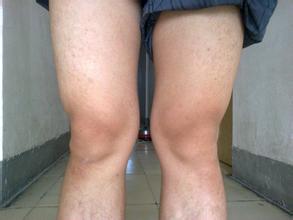Kemp E, Kingswood CJ, Kibuka M, Thornton JG. Position in the second stage of labour for women with epidural anaesthesia. Cochrane Database of Systematic Reviews 2013, Issue 1. Art. No.: CD008070. DOI: 10.1002/14651858.CD008070. pub2. (Meta-Analysis)
30
Walker C, Rodriguez T, Herranz A, Espinosa JA, Sanchez E, Espuna-Pons M. Alternative model of birth to reduce the risk of assisted vaginal delivery and perineal trauma. Int Urogynecol J 2012;23:1249–56. (Level I)
31
Roberts CL, Torvaldsen S, Cameron CA, Olive E. Delayed versus early pushing in women with epidural analgesia: a systematic review and meta-analysis. BJOG 2004;111: 1333–40. (Meta-Analysis)
32
Sagi-Dain L, Sagi S. The role of episiotomy in prevention and management of shoulder dystocia: a systematic review. Obstet Gynecol Surv 2015;70:354–62. (Meta-Analysis)
33
Murphy DJ, Macleod M, Bahl R, Goyder K, Howarth L, Strachan B. A randomised controlled trial of routine versus restrictive use of episiotomy at operative vaginal delivery: a multicentre pilot study. BJOG 2008;115:1695–702; discussion 1702–3. (Level I)
34
Goyder K, Howarth L, Bahl R, Strachan B, Murphy DJ. Morbidity experienced by women before and after operative vaginal delivery: prospective cohort study nested within a two-centre randomised controlled trial of restrictive versus routine use of episiotomy. BJOG 2013;120: 1020–6. (Level I)
35
Nager CW, Helliwell JP. Episiotomy increases perineal laceration length in primiparous women. Am J Obstet Gynecol 2001;185:444–50. (Level II-3)
36
Shiono P, Klebanoff MA, Carey JC. Midline episiotomies: more harm than good? Obstet Gynecol 1990;75:765–70. (Level II-3)
37
De Leeuw JW, Vierhout ME, Struijk PC, Hop WC, Wallenburg HC. Anal sphincter damage after vaginal delivery: functional outcome and risk factors for fecal incontinence. Acta Obstet Gynecol Scand 2001;80:830–4. (Level II-3)
38
Zafran N, Salim R. Impact of liberal use of mediolateral episiotomy on the incidence of obstetric anal sphincter tear. Arch Gynecol Obstet 2012;286:591–7. (Level II-2)
39
Coats PM, Chan KK, Wilkins M, Beard RJ. A comparison between midline and mediolateral episiotomies. Br J Obstet Gynaecol 1980;87:408–12. (Level I)
40
Sartore A, De Seta F, Maso G, Pregazzi R, Grimaldi E, Guaschino S. The effects of mediolateral episiotomy on pelvic floor function after vaginal delivery, Obstet Gynecol 2004;103:669–73. (Level II-2)
41
Andrews V, Sultan AH, Thakar R, Jones PW. Occult anal sphincter injuries—myth or reality? BJOG 2006;113:195– 200. (Level II-3)
42
Gilstrap LC III, Cunningham FG, Vandorsten JP. Operative obstetrics. 2nd ed. New York (NY): McGraw-Hill; 2002. (Level III)
43
Lundquist M, Olsson A, Nissen E, Norman M. Is it necessary to suture all lacerations after a vaginal delivery? Birth 2000;27:79–85. (Level I)
44
Elharmeel SM, Chaudhary Y, Tan S, Scheermeyer E, Hanafy A, van Driel ML. Surgical repair of spontaneous perineal tears that occur during childbirth versus no intervention. Cochrane Database of Systematic Reviews 2011, Issue 8. Art. No.: CD008534. DOI: 10.1002/14651858.CD008534.pub2. (MetaAnalysis)
45
Leeman LM, Rogers RG, Greulich B, Albers LL. Do unsutured second-degree perineal lacerations affect postpartum functional outcomes? J Am Board Fam Med 2007;20: 451–7. (Level II-3)
46
Oberwalder M, Connor J, Wexner SD. Meta-analysis to determine the incidence of obstetric anal sphincter damage. Br J Surg 2003;90:1333–7. (Meta-Analysis)
47
Groom KM, Paterson-Brown S. Can we improve on the diagnosis of third degree tears? Eur J Obstet Gynecol Reprod Biol 2002;101:19–21. (Level II-2)
48
Faltin DL, Boulvain M, Stan C, Epiney M, Weil A, Irion O. Intraobserver and interobserver agreement in the diagnosis of anal sphincter tears by postpartum endosonography. Ultrasound Obstet Gynecol 2003;21:375–7. (Level II-3)
49
Faltin DL, Boulvain M, Floris LA, Irion O. Diagnosis of analsphinctertearstopreventfecalincontinence:arandomized controlled trial. Obstet Gynecol 2005;106:6–13. (Level I)
50
Kettle C, Tohill S. Perineal care. BMJ Clin Evid 2011; 2011:1401. (Level III)
51
Feigenberg T, Maor-Sagie E, Zivi E, Abu-Dia M, BenMeir A, Sela HY, et al. Using adhesive glue to repair first degree perineal tears: a prospective randomized controlled trial. Biomed Res Int 2014;2014:526590. (Level I)
52
Kettle C, Dowswell T, Ismail KM. Continuous and interrupted suturing techniques for repair of episiotomy or second-degree tears. Cochrane Database of Systematic Reviews 2012, Issue 11. Art. No.: CD000947. DOI: 10. 1002/14651858.CD000947.pub3. (Meta-Analysis)
53
Kettle C, Dowswell T, Ismail KM. Absorbable suture materials for primary repair of episiotomy and second degree tears. Cochrane Database of Systematic Reviews 2010, Issue 6. Art. No.: CD000006. DOI: 10.1002/14651858. CD000006.pub2. (Meta-Analysis)
54



